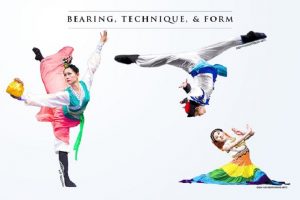Chinese dance is a performance art form that has been handed down from generation to generation. Many dances that we know now originated from traditional Chinese dance.
Table of Contents
- 1 What is Chinese Dance and What Makes it Unique?
- 2 Three Must-Know Facts About Chinese Dance
- 3 The History of Chinese Dance
- 4 The Different Types of Chinese Dance Styles
- 5 Music of Chinese Dance
- 6 Techniques of Chinese Dance
- 7 Equipment and Accessories
- 8 What are the Benefits of Dancing to our Health and Mind?
- 9 Frequently Asked Questions
- 10 Resources
What is Chinese Dance and What Makes it Unique?
Traditional Chinese dance, also called Classical Chinese dance, is rooted in China’s 5,000 years of traditional culture. It has a long history and contains various cultural efforts and original ideas.
There are more than 50 ethnic minorities in China. Each ethnic minority has a unique dance style element. So, there are hundreds of Chinese dances.
Among the traditional Chinese dances, the most famous are dragon dance and lion dance.
Today, there are more than 10 major forms as well as many different regional styles varying by province/region. In order to really glean the beauty of Chinese Dance, you need to understand its origins.
Let’s explore all there is to know about Chinese dance: facts, history, styles, costumes, music, and props, etc.
Three Must-Know Facts About Chinese Dance
Few people in the West know the 3 secrets in the rich art of traditional Chinese dance:
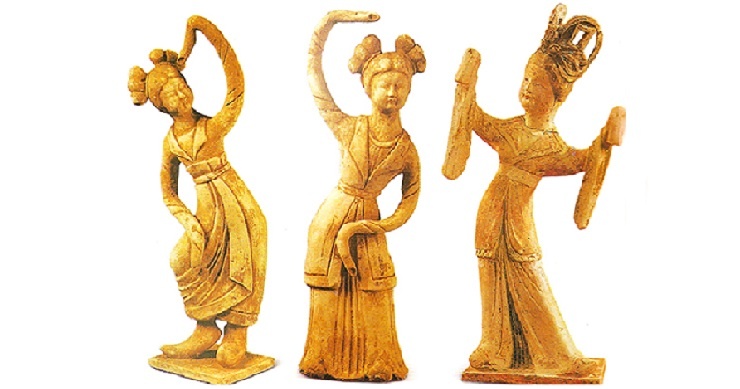
1. Chinese dance has a history of thousands of years
In ancient statues, sculptures, and texts, you can see Chinese dances deeply rooted in the five thousand years of Chinese history.
From the palaces of the Xia and Shang dynasties to the palaces of the Forbidden City of the Qing dynasty, each dynasty had its court dances with different styles.
Some Chinese dances are inherited and evolved from folk dances, operas, and theatrical traditions.
Today’s classical Chinese dance has absorbed the essence of dances of all dynasties and has developed into a comprehensive dance system.
2. The connection between Chinese dance and martial arts
The pronunciation of “wu” in martial arts in the Chinese dictionary is the same as “dance” in dance.
The same sound but different meaning implies a mystery passed down in the same vein between these two characters.
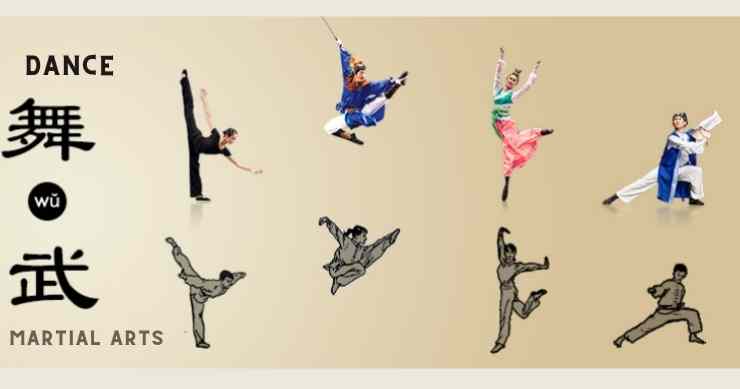
If the same technique is used for fighting, it is martial arts, and if it is used for performance, it is dance.
As you can imagine, an ancient warrior turned backward to avoid the fatal blow of a spear.
You will also see almost the same movements in Chinese classical dance.
3. Many gymnastics movements come from traditional Chinese dance
When people see Shen Yun dancers leaping and tumbling on stage, they can’t help but say:
“I like this acrobatic action!” or “his gymnastic action is awesome!”

These skills, in fact, are neither gymnastics nor acrobatics. They are originated from traditional Chinese dance.
There were no such churns in gymnastics decades ago. In Chinese dance, these tumbling have a history of thousands of years.
The History of Chinese Dance
There is a long recorded history of various forms of dance in China.
In Chinese culture, dance is not only an expression of emotion but also a representation of the history and culture of the very country.
In recent years, Chinese dance has become more and more mainstream on the global stage.
1. Early history of Chinese Dance
The earliest Chinese character for “dance”, ![]() , written in the oracle bones, is itself a representation of a dancer holding oxtails in each hand.
, written in the oracle bones, is itself a representation of a dancer holding oxtails in each hand.
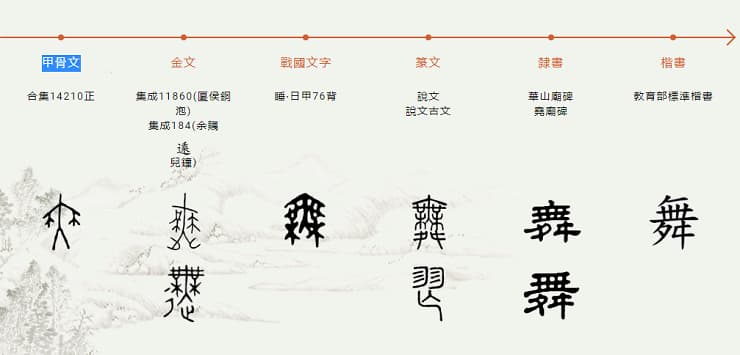
Origin of Chinese Character -Dance (舞)
Early Chinese dances were related to temple rituals. Early folk dances also developed into court dances.
Many Chinese dances were passed down in a master-to-apprentice format throughout the thousands of years of Chinese civilization.
2. Zhou Dynasty (1122 – 256 BC)
From the Zhou Dynasty, and all the way up the Five Dynasties period (907 – 960 AD), the royal courts established an institution responsible for music and dance.
Many of the musicians and dancers have been intensively trained to study and perfect their dance programs. This is the origin of Chinese court dance.
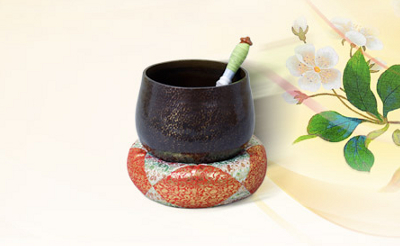
One of the known dances in ancient China is the ceremonial music (YaYue 雅樂 ) of the Zhou Dynasty in the millennium BC. These dances were performed at the imperial court until the Qing dynasty, but only survive today as performances in Confucian ceremonies.
3. Qin and Han Dynasties (221 BCE – 220 CE)
The imperial court from the Qin dynasty onward established various departments responsible for the collection of music and dances, training of performers as well as their performances at the court, such as the Music Bureau and Royal Academy.
4. Six Dynasties Era (220–589 CE)
During the Six Dynasties era, there were strong influences from Central Asia in music and dance.
5. Tang Dynasty (618–907 CE)
Chinese dance art reached its peak in the Tang Dynasty.
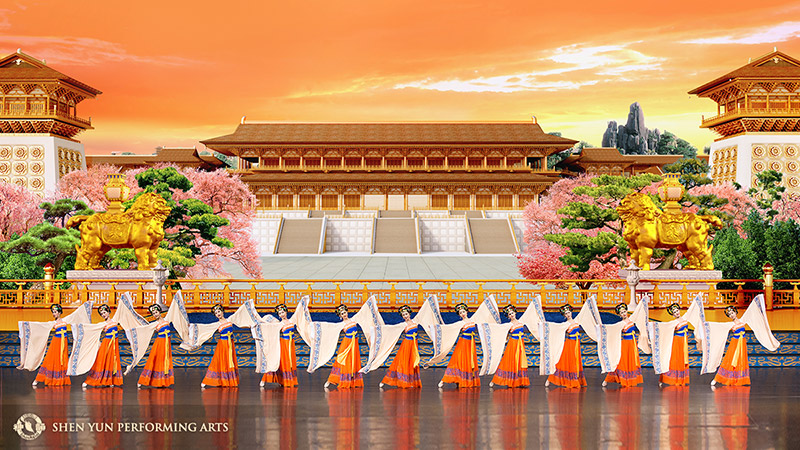
A great number of dances were recorded in the Tang dynasty. For example there are over 60 Grand Compositions alone which are large scale performances from the Tang court. There were tens of thousands of musicians and dancers at the Imperial palaces.
6. Five Dynasties to the Song dynasty (907–1279 CE)
During the Five Dynasties, social order was severely disrupted by wars. Regrettably, many of these dance performances have been lost.
After the Song Dynasty (960-1279 AD), folk opera began to replace ancient Chinese dance.
7. Yuan to Qing (1271–1912 CE)
Chinese opera became popular during Yuan dynasties. Many dances were merged into Chinese opera.
Chinese opera draws heavily on dances from the Sui Dynasty (581 AD to 618 AD) and Tang Dynasty.
8. Modern era
In recent times, the Chinese dance has enjoyed a resurgence. Modern Chinese dance is developed from traditional dance, folk dance, opera, martial arts, and ballet .
The Different Types of Chinese Dance Styles
There are a number of different types of dances in China. Some are related to harvest and hunting, while others are associated with gods and spirits. Some of the earliest dances were performed in court rituals and ceremonies.
The varied development history of Chinese dance gave it a rich diversity of movements. Since Chinese dance is developed from many different nationalities and social customs, it has many distinctive style of characteristics.
Chinese dance includes many different styles and forms in modern and traditional dance genres, such as:
Traditional Chinese Dance Styles (中國傳統舞蹈)
The number of different types of traditional Chinese dances are countless, but the most common are the classical dance, dragon dance, lion dance, and so on.
Chinese Classical Dance (中國古典舞蹈)
Classical Chinese dance has a long history of thousands of years, passed down continuously within the imperial palace and ancient Chinese theater and opera, and it is a complete system of dance embodying traditional aesthetic principles with its unique dance movements, rhythms, and inner meaning.
Chinese Court Dance (宮廷舞)
Court dancing has been around since the Qin Dynasty (220 B.C.), but it reached its peak in the Tang Dynasty and was portrayed in poems, paintings and sculptures of that time.
Chinese court dances have developed in different ways. There are court dances that are based on martial arts, while others are based on Chinese rituals.
Here are top 2 most popular Chinese court dances:
– Prince Qin’s Cavalry
“Prince Qin’s Cavalry” is a martial dance that is based on the glory and power of the imperial army.
The performance calls for 120 dancers, a choir of 100, and 100 musicians. It is performed in a circular formation with war chariots in front and foot soldiers in the rear.
The dance has 12 variations which the audience watches, standing on the floor to clap their hands as they watch.
– Nichang Yuyi
The Dance of “Nei Chang Yu Yi” (Rainbow and Feather Dress Dance) was created Tang dynasty emperor Xuanzong. It is a masterpiece of traditional Chinese dance.
In the dance performance, The dancers portray the emperor’s dream where he goes to the moon and meets a host of beautiful performers.
The dancers hold Fanjie (幡节), wore feathered dance dress and emeralds. When they danced, they seemed like a group of cranes flying in the sky.
Dunhuang Dance
Dunhuang Dance is a type of Chinese dance that draws its inspiration from the artifacts discovered in the Dunhuang Mogao Caves in Gansu province, China.
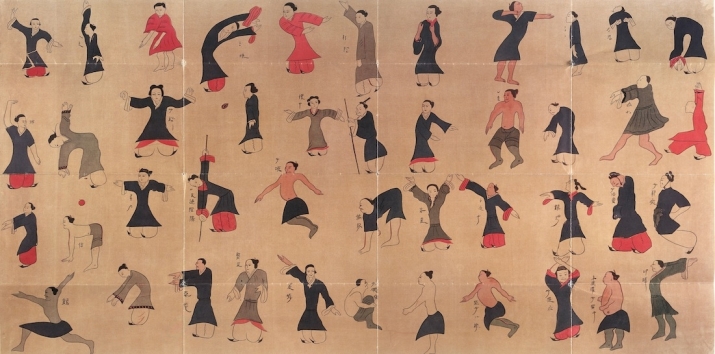
Dunhuang has 735 caves along the Silk Route, are famous for their statues and fresco paintings, spanning 1,000 year of Buddhist art.
The Dunhuang dances itself is influenced by Buddha images and Buddha religion.
Chinese Folk Dance (中國民間舞蹈)
Early Chinese folk dances, like other primitive art forms, were essentially ritualized performances of belief in gods in order to obtain a good harvest.
It developed as a result of complex interactions between the spiritual and material life, and has been influenced by many factors, such as Confucianism, Buddhism, Taoism and folk customs.
Chinese Dragon Dance (舞龍)
The Chinese dragon dance has become the most famous of all Chinese dances. It is an ancient dance that originated when the Dragon God ruled the Earth.
The dragon, with its fierce looking head especially, symbolizes dignity, wisdom, divine power and good fortune.
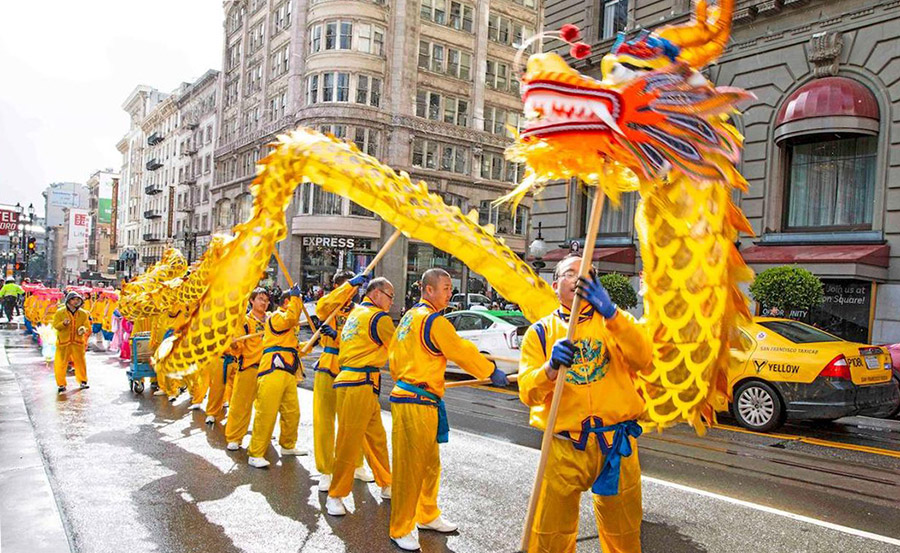
For a traditional Chinese festival, the dragons are built to be 100 meters long. They are made out of parts connected by joints so that they can be twisted and turned to the beat of the music.
During the festival, dragons are pulled through the streets of cities by teams of people dressed as animals.
There are several versions of the Dragon Dance, one of the most popular of which is the Fire Dragon performance, during which countless lanterns are paraded before the dragon, symbolizing the creature’s fiery breath.
Chinese Fan Dance (扇子舞, shànziwǔ)
Fans play an important role in traditional Chinese dance. Fans are generally used to accentuate dancers’ movements, and represent beauty and grace.
Fans are not exclusive to China. But they are very popular in China, and their history extends back to ancient times.

Chinese fan dance generally refers to the dance where the fan is used as the main prop. Customized fans are often required by the choreographer for each show.
The Chinese fan dance is an intricate, smooth choreography of multiple dancers using their bodies to perform on stage, which includes the use of fans as props.
It is a form of art that remains one of the most emotionally moving displays to watch. It has the audience enthralled with the beauty of nature, such as flowers or butterflies, and the viewer sees this by watching the movement of the fan itself.
Chinese Lion Dance (舞獅)
The lion dance is one of the most reprehensive traditional Chinese dances, Chinese lion dance is typically performed by two or three dancers. It is usually designed to represent a story.
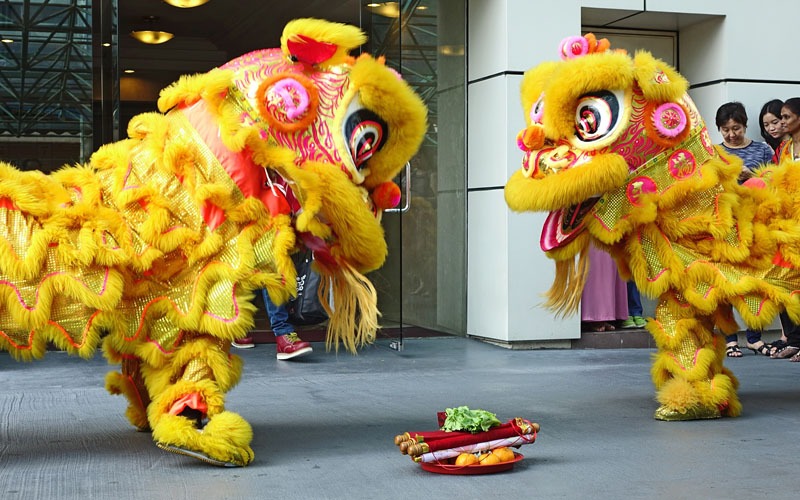
Most of the people enjoy watching the dancing lions. The traditional dance originated in China. The Chinese people still admire the king of beasts, the lion.
In northern China the Lion Dance symbolizes the Daoist religion, while in southern China it represents the Buddhist faith.
Chinese Long Sleeve Dance
Chinese long sleeve dance is originated in ancient China and became very popular in Han and Tang dynasties.

The Long sleeve dancing combines the musicality of traditional Chinese music with graceful and fluid movements, focusing on the interplay between performer and audience.
It blends the characteristics of both Chinese opera and traditional Chinese dance, showing a unique beauty.
Chinese Opra Dance
Chinese opera dance includes music, singing, acting and dancing.
It originated from the songs and dances in the prehistoric society. With a long history, it’s become a comprehensive stage art style.
Chinese Peacock Dance
Peacock dance is a famous Dai traditional dance performance.
It is told that over a thousand years ago, Dai leader Zhaoma LiJiesu learned to dance by imitating the graceful posture of peacocks. Then later generations of folk artists refined the dance movement and passed down to become the peacock dance today.
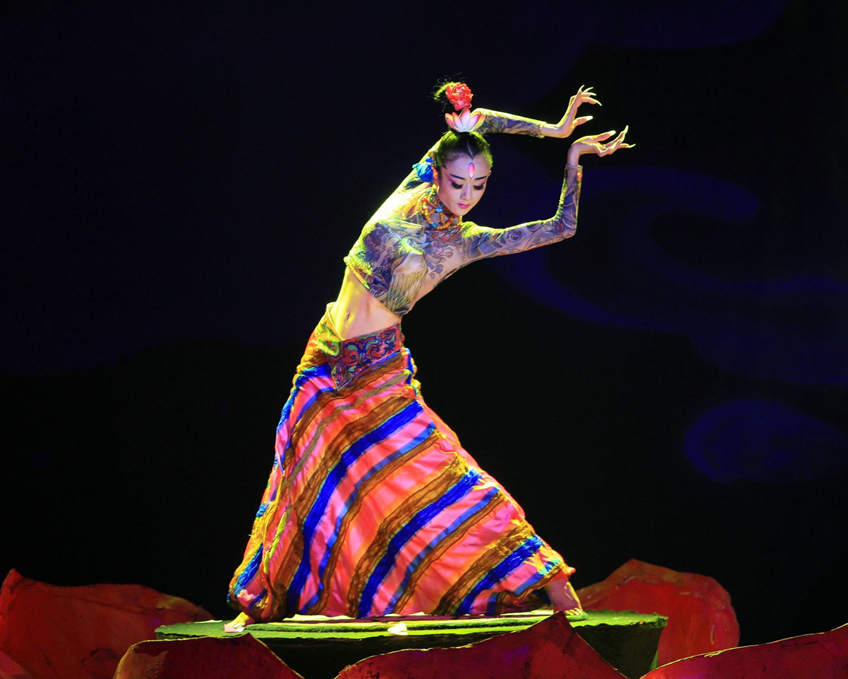
The movements of peacock dance are graceful, flexible, light and agile. Performers require a high level of flexibility on calf, knee and eyes.
Chinese Ribbon Dance (絲帶舞)
Chinese ribbon dance is originated in the Tang dynasty in the early eighth century.
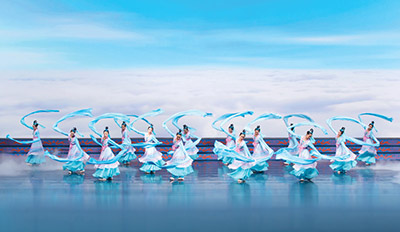
The dance with the flowing silk ribbons and accompanied by Chinese music instruments, the Erhu and the Pipa, is characterized by its poetic and pleasing mood.
Chinese Sword Dance (劍舞)
The sword dance is used in several styles of Chinese opera. A tassel is attached to the sword to make it appear to move as if it were dancing.
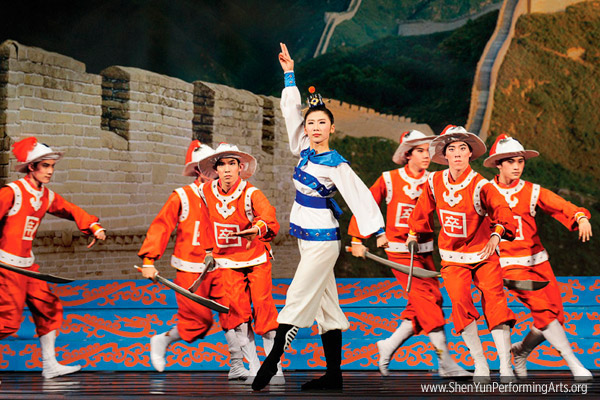
The wushu was invented by Chinese martial artists who wanted to improve their fighting skills. Later, this became part of a performance style called opera.
Chinese Umbrella Dance
The Umbrella Dance was created and very popular during the Han Dynasty in China.
It originated from a district in China well known for making umbrellas.
The umbrella, a symbol of wealth and honor, is typically made of cloth or paper and has patterns on the circular top of it.
Yangge ( 秧歌舞)
Yangge (‘Rice Sprout Song’ ) is a Chinese dance created by the farmers in the Song Dynasty when they worked in the rice fields. It’s a dance performed by farmers to honor god of farming.
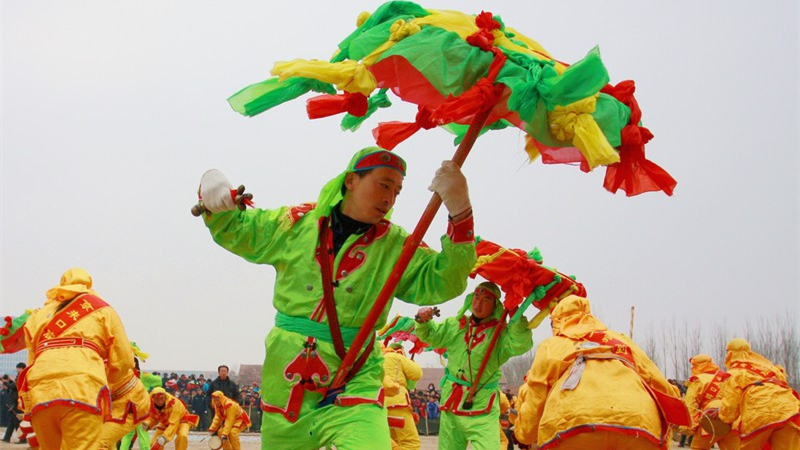
The Yangge dance is smooth and compact in rhythm, featuring its energetic dance steps, abundant dancing movements, exuberant actions, and vibrant performance style.
Yangko dance costumes are colourful and stunning, made mainly based on theatrical costumes
Modern Chinese Dance Styles (中國現代舞)
Modern Chinese dance is a free and expressive form of dance that emerged from the United States and Germany in the late 19th and early 20th centuries.
Its status in China has yet to be established, but it has gained strength with the backing of wealthy patrons. Dancers have formed companies, festivals, and choreographers who are trying to make the dance more popular.
Modern dancers have no strict rules when it comes to creating their own dance routines. This means that they often create their own dance routines using their emotions and moods. They usually don’t wear specific costumes.
The popular modern dance styles in China include ballet, disco dancing, ballroom dancing and square dance.
Music of Chinese Dance
Music is critical to dance, since the dance is structured to match the music.
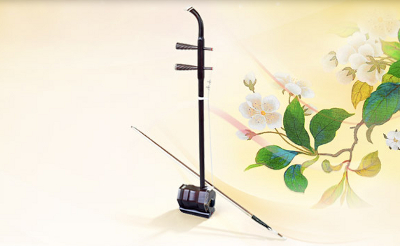
The Chinese have used music to enhance the sense of movement for millennia. The music of Chinese dance ranges from traditional genres to modern folk music.
Chinese dances use a variety of instruments such as dizi (bamboo flue), drums, erhu (二胡), gong, pengling (hand bells), qing (chime), and pipa (琵琶).
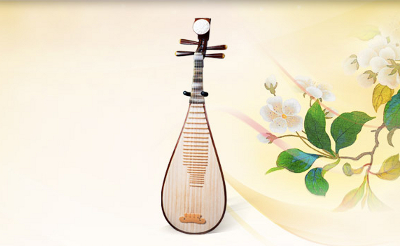
Each dance style requires a different type of instruments depending on the region where they originated.
Instrumentalists have a central role in Chinese culture, which can be seen in how they are honored at festivals.
Techniques of Chinese Dance
Chinese dance is an ancient art form with a wide range of techniques, from leaps and bounds to spins and flips, and more.
The dance technique involved in Chinese dance is often associated with the natural grace of the movements. The body often moves with an undulating motion, sometimes bending at the waist or spine or swaying side to side.
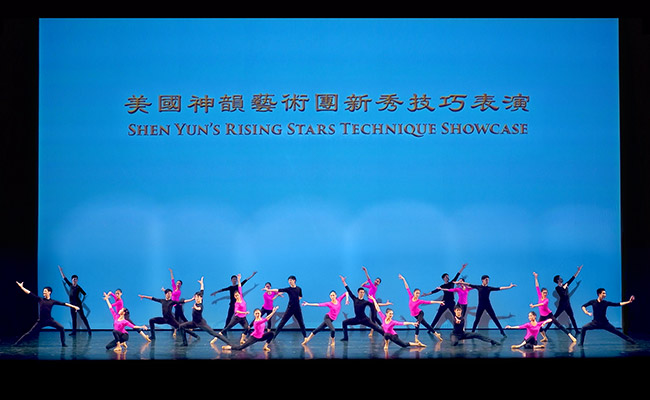
The first technique to learn when beginning Chinese Dance is the Wu style of Dance; this style focuses on stretching of the body in order to strengthen flexibility, deepen breathing techniques and loosen muscles.
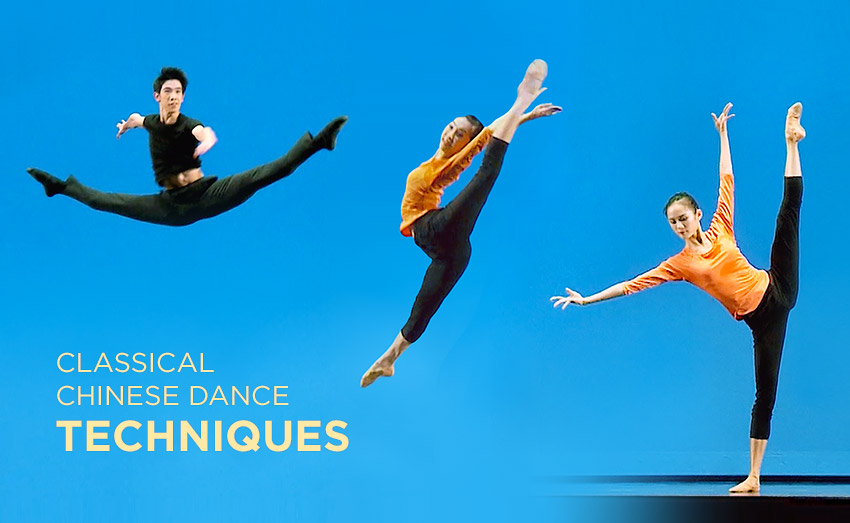
The second technique is called “Dao”; this type of dance-style emphasizes on relaxation more than anything else, associating motion with breath in order to maintain balance and clarity within oneself.
Equipment and Accessories
Chinese dance is a social dance in which individuals or groups perform their skill in front of the audience. Dancers wear different costumes with different colors. They can also use props in their performance, for example Chinese fan, handkerchief and so on.
Props of Chinese Dances
Stage props help dancers display their emotions, and when used effectively, can create wonderful images of dance onstage.
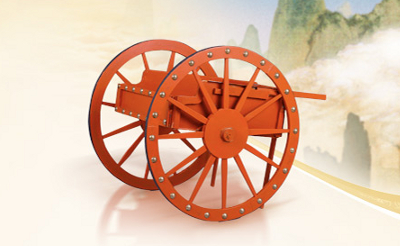
Chinese dances have used a range of props and costumes, each with a distinct purpose. They tell stories. For example:
- Flapping fans, just like the petals of a delicate flower.
- Umbrellas twirl in refreshing drizzle.
- An embroidery hoop beautifully enhances a woman’s femininity.
- A well-bound book bestows wisdom upon a scholar
- A solitary Daoist journeys with a magical whisk.
- A long silk ribbon, colored in rainbow hues,comes backs to the sky as a fairy’s companion.
- The young general sports a Chinese sword
- Mulan’s warriors face enemies armed with shields and broadswords called dao.
- Archers train with drawn bows
- Nothing nothing is more powerful than a team of Tang dynasty men pounding their battle drums
Costumes of Chinese Dances
Chinese attire is as diverse as Chinese culture itself.
Chinese dance costume artists have amassed a collection of thousands of costumes, ranging from those of emperors, ministers, and generals to the everyday clothing of the common people.
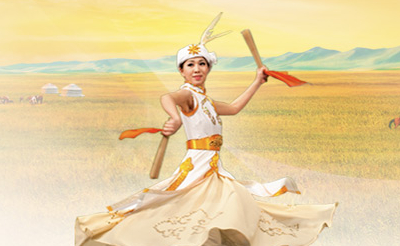
Traditional dance costume artists are very talented at creating various costumes and re-creations of traditional pieces of clothing that come from Chinese culture. Their objective is an authentic presentation of the attire that comes from China’s traditional culture.
What are the Benefits of Dancing to our Health and Mind?
Dancing is a great way to exercise and enjoy yourself at the same time. It engages the entire body and requires very little equipment. The steps and movements in a dance routine can help strengthen muscles, boost your mood and boost your metabolism.
Dacning can improve your heart health, raise your blood pressure and make you feel more energetic.
– It increases your metabolism.
– Dancing releases endorphins that are linked to happiness.
– It reduces pain in the body by releasing endorphins.
– Professional dancer, Romeo James, says that “dance is a release for me.”
Dancing is not just for professional or amateur dancers. You can dance with or without music to have a good time and feel better too!
Why You Should Take Up Chinese Dance as an Art Form or Activity
The practice of Chinese dance is a great way to keep fit and healthy. Dancing, in general, is a form of physical exercise that can help you maintain a healthy weight.
A few minutes of dancing on the daily will make sure that your heart stays healthy and strong.
Frequently Asked Questions
What do you think of when you hear the word Chinese dance?
Chinese dance is an asynchronous music-led form of traditional performance art, originating in China including dances with waving sleeves, stamps of the feet, strong claps. It is constantly changing and evolves constantly. It has spread to Asia and can be considered one of the world’s five major dance traditions.
What is the Cultural significance of Chinese dance?
China is home to one of the most ancient civilizations in human history. It is rich with culture and tradition that can be found everywhere – from temples, to museums, to folk performances.
One of the most important forms of Chinese culture is dance, influencing everything from its clothing styles to food preparation.
One example would be the Yi ethnic group. They are primarily found in Yunnan Province, China and are best known for their colorful traditional clothing and dance styles.
What is the music of Chinese dance?
The music for Chinese Dance may be played on sets of gongs or bamboo chimes, to which drums or other percussion instruments may be added.
What can the viewers expect from the Chinese dance show?
When you view the dance show, you will feel like enjoying the amazing eras in ancient Chinese practices.
You will get to know more about ancient legends, folk traditions, heroes, villains, ethnic and more as the Chinese dance will bring them back to life. So, go on and book your tickets now.
What are the most popular Chinese dance?
While there are several popular Chinese dance forms, Lion dance and Dragon dance are the best-known Chinese traditional dances as these were found in earlier dynasties.
By far, these two dance forms are the most popular Chinese dance styles.
Is kung fu or martial arts a type of Chinese dance?
The traditional Chinese martial arts (Wu Shu) (Kung Fu) share a few similarities with Chinese dances. so, you may see some dance steps or dance forms that will appear like martial arts.
What is the Origin of Chinese Dragon Dance?
The origin of the dragon dance can be dated back to the Han Dynasty (206 BC–220 AD). It was then used in a ceremony for worshiping ancestors and praying for rain, but it gradually developed into an entertainment activity. By the Tang Dynasty (618–907)and the Song Dynasty (960–1279), the dragon dance had become a common ceremonial activity in festivals like Chinese New Year.
What is the Origin of Chinese Lion Dance?
In traditional Chinese culture, the lion was seen as a mythological creature, and there were no actual lions in China before the Han Dynasty. Lions did not reach the Central Plains from the western area of ancient China until after the Silk Road trade started.
At that time, people mimicked the appearance and actions of the newly arrived lions in a performance, which developed into the lion dance in the Three Kingdoms Period (220–280) and then became popular with the rise of Buddhism in the Northern and Southern Dynasties (420–589). In the Tang Dynasty (618–907), the lion dance became one of the court dances.
Resources
- shenyunperformingarts.org
- en.wikipedia.org
- culture-exchange.blog
- factsanddetails.com
- lovetoknow.com
- chinahighlights.com






